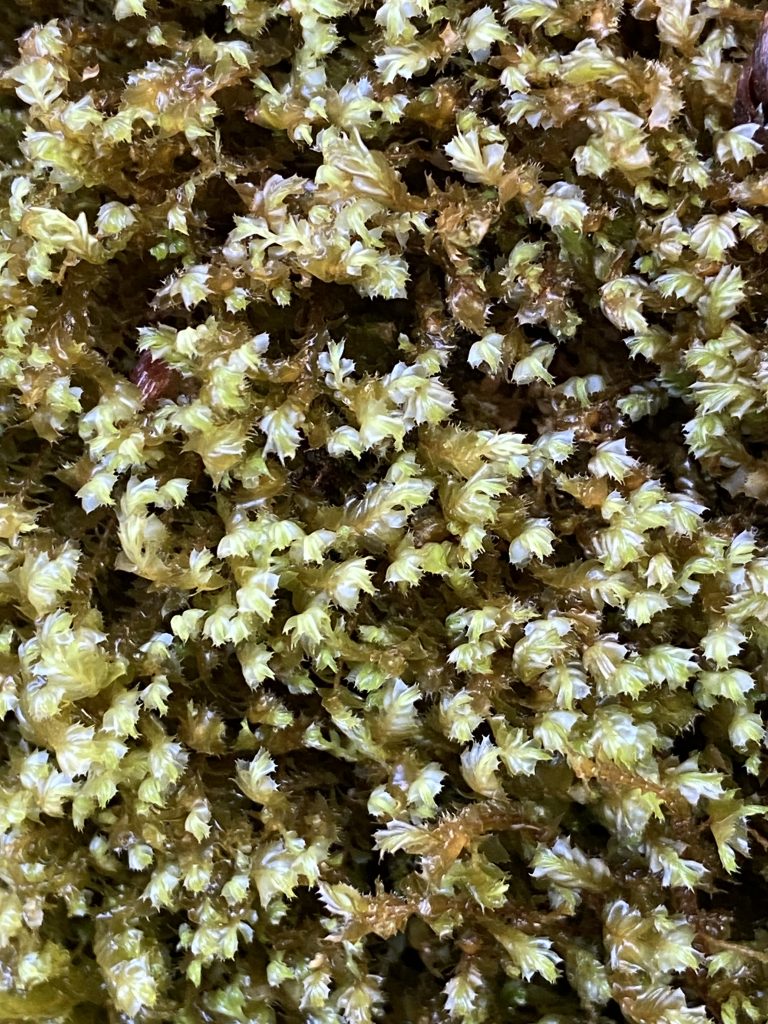Exploring Temperate Rainforests

Exploring Temperate Rainforests
Exploring temperate rainforests across the six counties
Since the beginning of June, I have been surveying floristics of temperate rainforests for across the North for my MSc project. The floristics I was focussing on were oceanic cryptogams (bryophytes, ferns and lichens). We had a species list developed for the fieldwork which we used to characterise the floristic features of the sites. We had a mixed result with some sites with weak rainforest elements and others with much stronger rainforest signatures.
Many people do not know that we have temperate rainforest in Ireland. But under specific bioclimatic conditions, woodlands take on a particular floristic or physiognomic signature wherein, every solid undisturbed surface (rocks, trees, wooden fences) are smothered in bryophytes and lichens. However, it isn’t just the abundance of say epiphytes on a mature oak tree (though this is definitely a physiognomic feature which should be incorporated into habitat definitions), it also the diversity of species. Due to a multitude of environmental conditions, there can be extreme differences in species diversity and their relative abundance. This is particularly true of bryophytes and lichens which are particularly sensitive to variables like atmospheric pollution, soil pH and microclimate.
So what bioclimatic conditions create temperate rainforest? Well, despite what we would like to believe, Ireland has a VERY equitable climate, i.e. lack of climatic fluctuation throughout the year. We average a 10-15 o C range in temperature from Summer to Winter and even though we receive most of our precipitation in Winter, we receive well over 10% of it during the Summer, meaning a humid atmosphere throughout the year. These conditions are further compounded by topographical and geographical features such as mountains, glens and proximity to the sea which can increase local humidity levels, and keep frost away from cold-sensitive organisms. There is a reason why we hardly see snow in Ireland.
So what happens when woodland forms under these conditions? You get temperate rainforest. Certain species have evolved to exploit these humid and sheltered habitats. We all know mosses love moisture, but oceanic species are termed poikilohydric, meaning that they demand constant moisture to maintain homeostasis and complete their live-cycles. We find a great deal of these species in temperate rainforest. Now, not all woodlands in Ireland are rainforests. These forests are so enchanting that it can encourage people to label a woodland as rainforest without investigating the species that inhabit it. We don’t actually know the current extent of temperate rainforest in Ireland. Of course, out west is an obvious region, but the ring of mountain ranges around the Irish coast can also generate the conditions which support rainforest.
The species which indicate temperate rainforest are unfortunately, often difficult to identify. Some are minute, others are scarce. However, when you spend a lot of time learning about these plants and observing them (like I have), one can become very familiar with their presence even from far off. I can spot a patch of the liverwort Plagiochila spinulosa from general vibes even among other bryophytes!
The best site visited was Correl Glen, west Fermanagh. It is a mesmerising place and a 5-star example of temperate rainforest. Banagher Glen near Dungiven was also amazing and is a large site with lots to explore. These habitats have a certain feeling that is hard to explain. It is a humidity mixed with mysticism. It is the closest we get to tropical ecosystems in Ireland (but without mosquitos).
Overall, we recorded 43 temperate rainforest species across 6 sites. We also recorded 11 county firsts which is always exciting. And amazingly, we found for the first time in Ireland, a newly described (2024) perianthocolous fungus which parasites the liverwort Lejeunea patens from Correl Glen. It is only known from temperate rainforests in Scotland and Wales, marking the 6th global record. Very chuffed with this.

The Leafy liverwort Plagiochila bifaria from Correl Glen